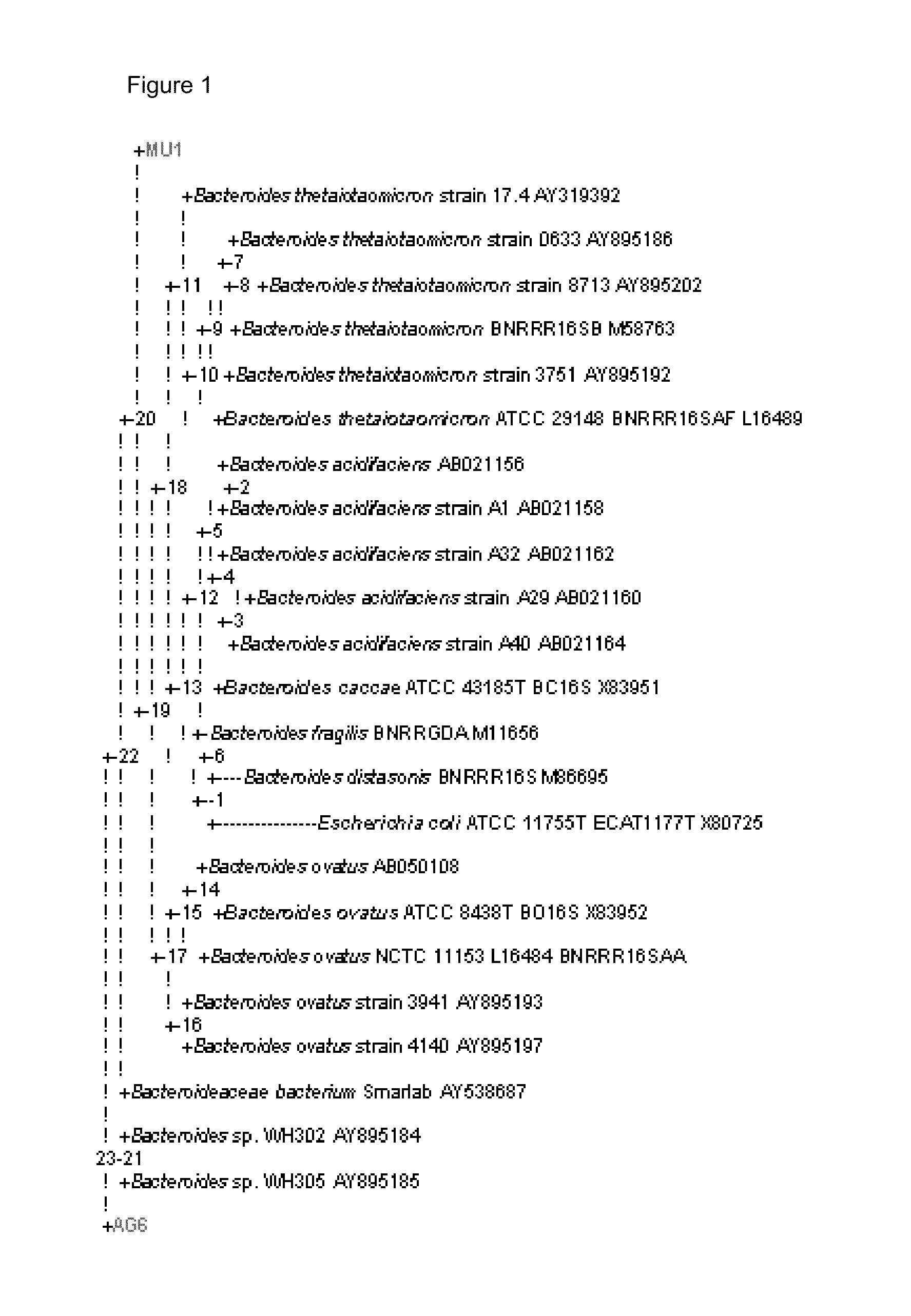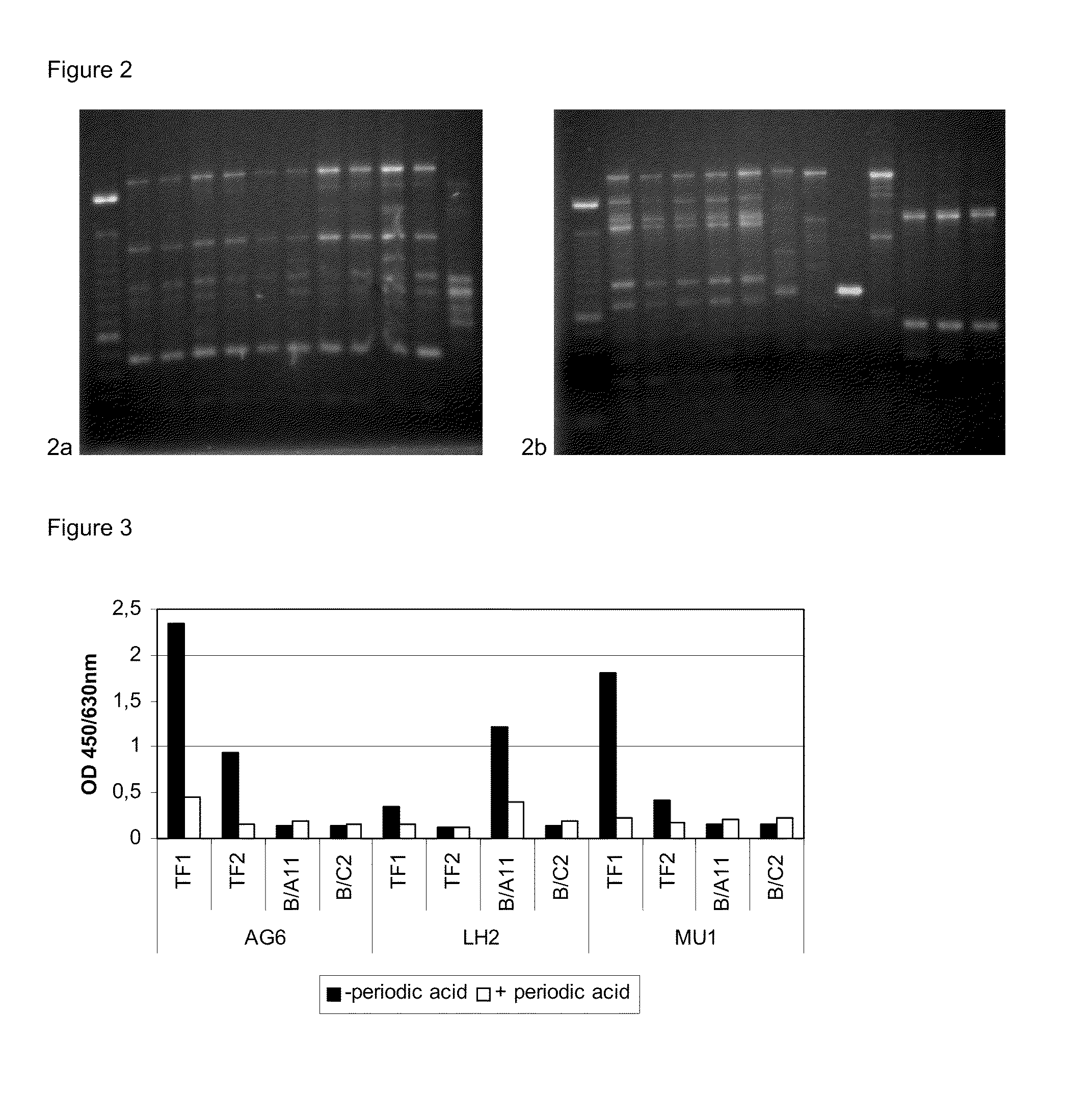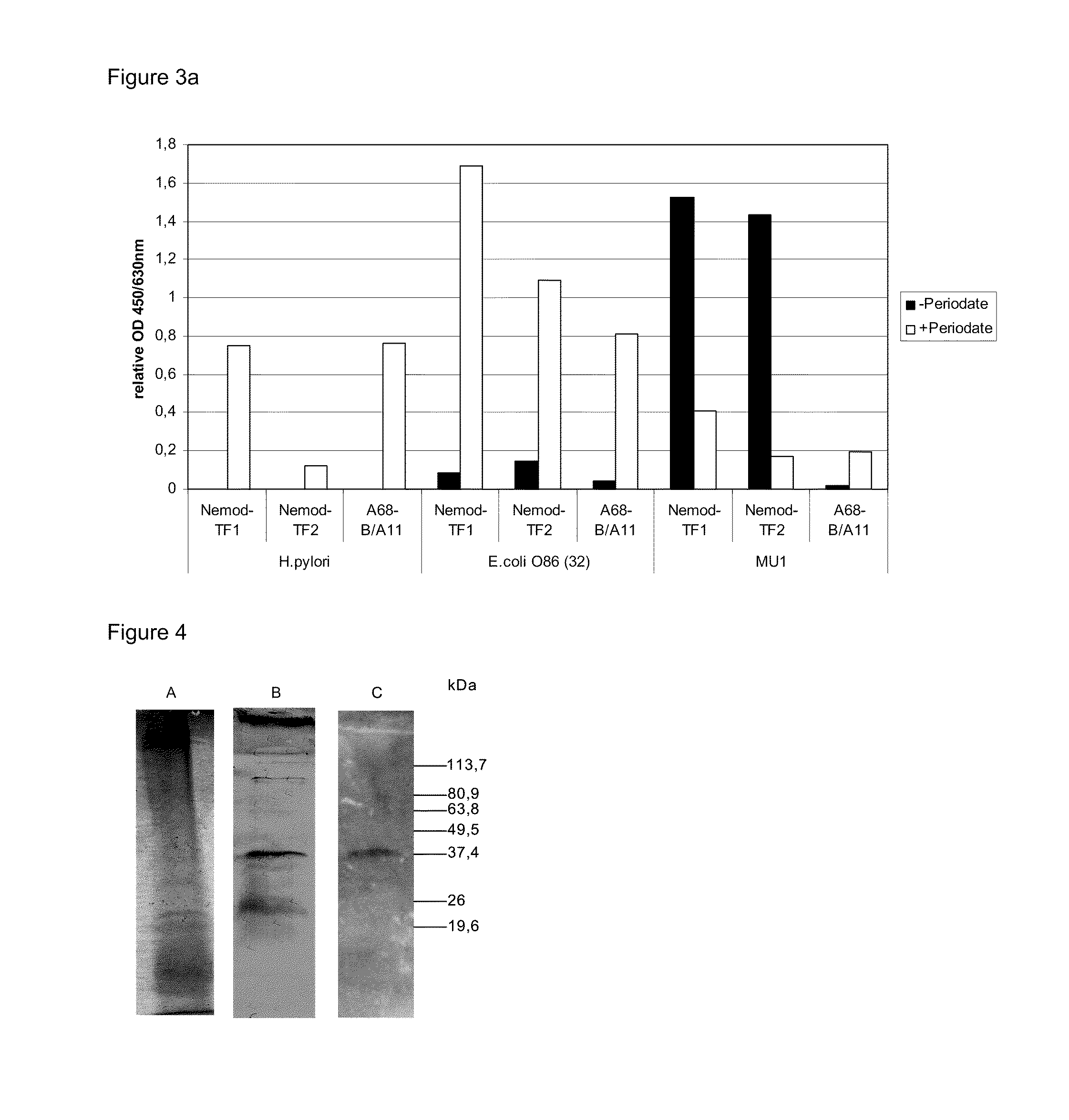Microorganisms or fractions thereof capable of activating cellular immunity against carbohydrates
a microorganism or fractional technology, applied in the field of gastrointestinal disorders and cancer, can solve the problems of not being able to fully activate cellular immunity against carbohydrates, tf-specific antibodies have not been further developed so far, and anti-tf-ag antibodies are not clinically useful, so as to enhance a specific and thus potent immune response, prevent or reduce the incidence of core-1 positive tumours and/or their metastases, and enhance specific immune response. high
- Summary
- Abstract
- Description
- Claims
- Application Information
AI Technical Summary
Benefits of technology
Problems solved by technology
Method used
Image
Examples
example 1
Anaerobic Culture Techniques and Media
[0873]Anaerobic techniques employed in the cultivation of bacteria were based on methods previously described which have been summarised by Breznak and Costilow. Media prepared with cysteine.HCl as a reducing agent were dispensed into anaerobic culture tubes (Ochs, Bovenden, Germany) or glass serum bottles, leaving approximately half to a third of the total vessel volume as gas head space, and sealed with butyl rubber stoppers. Solutions prepared without reducing agents (e.g. PBS-a) were boiled prior to dispensing. Before autoclaving, the gas phase was replaced with N2 / CO2 (80 / 20, v / v). To achieve this, needles were thrust through the butyl rubber-stoppered bottles and the bottles were evacuated by means of a vacuum pump (Vacuubrand, Wertheim, Germany). Following evacuation, bottles, which were repeatedly shaken during the entire process, were gassed with N2 / CO2 (80 / 20, v / v). This evacuation and gassing procedure was carried out three times in t...
example 2
Affinity Enrichment of Core-1 Positive Microorganisms
2.1 Preparation of Tf1 and Tf2 Coated Dynabeads®
[0876]A volume of 100 μl Dynabeads® (M-450 Rat Anti-Mouse IgM, Dynal Biotech ASA, Oslo, Norway) each was placed in 2 ml Safe-Lock Eppendorf tubes (Eppendorf, Hamburg, Germany), washed twice with 2 ml phosphate buffered saline a (PBS-a: 8.1 g l−1 NaCl, 0.16 g l−1 NaH2PO4.H2O, 0.98 g l−1 Na2HPO4.2H2O, 1 g l−1 BSA, pH 7.4) using the Dynal Magnetic Particle Concentrator®-S (MPC®-S, Dynal Biotech, Oslo, Norway) and suspended in 25 μl of PBS-a. Lyophilised TF1 or TF2 cell culture supernatants were dissolved in 1 ml milli-Q synthesis grade water (Millipore, Billerica, Mass., USA). Dissolved TF1 or TF2 cell culture supernatants (1 ml) were added to the tubes with Dynabeads® and incubated for 30 min at 4 C on a test tube rotator (model 34528, Snijders Scientific, Netherlands). Tubes were placed in the MPC®-S and left to stand for 3 min before removing the fluid with a pipette. The Dynabeads® ...
example 3
Identification of Isolates
3.1 Biochemical
[0884]Bacteria were identified with the VITEK system (Biomérieux, Marcy I'Etoile, France). Bacteria were prepared according to the manufacturer's instructions and the identification cards used were as follows: ANI cards for anaerobic isolates and faculatively anaerobic Gram-positive rods able to grow in MRS broth (suspected lactobacilli), GPI cards for Gram-positive isolates and GNI+ cards for Gram negative aerobic isolates.
[0885]The biochemical identity of the isolates obtained using the VITEK system (Biomérieux, Marcy I'Etoile, France) is summarised in Table 5. The anaerobic isolates AG6, MU (1, 3-5) and AB12 all belong to the Bacteroides fragilis group, whereas the aerobic isolates are all members of the Enterobacteriaceae; both are Gram-negative.
TABLE 5Identification of the isolated strains basedupon biochemical characteristics (VITEK)StrainIdentificationProbabilityAG6Bacteroides ovatus82-95%MU (1, 3-5)AB12AG3Escherichia coli89-99%LH (2-5...
PUM
 Login to View More
Login to View More Abstract
Description
Claims
Application Information
 Login to View More
Login to View More - R&D
- Intellectual Property
- Life Sciences
- Materials
- Tech Scout
- Unparalleled Data Quality
- Higher Quality Content
- 60% Fewer Hallucinations
Browse by: Latest US Patents, China's latest patents, Technical Efficacy Thesaurus, Application Domain, Technology Topic, Popular Technical Reports.
© 2025 PatSnap. All rights reserved.Legal|Privacy policy|Modern Slavery Act Transparency Statement|Sitemap|About US| Contact US: help@patsnap.com



